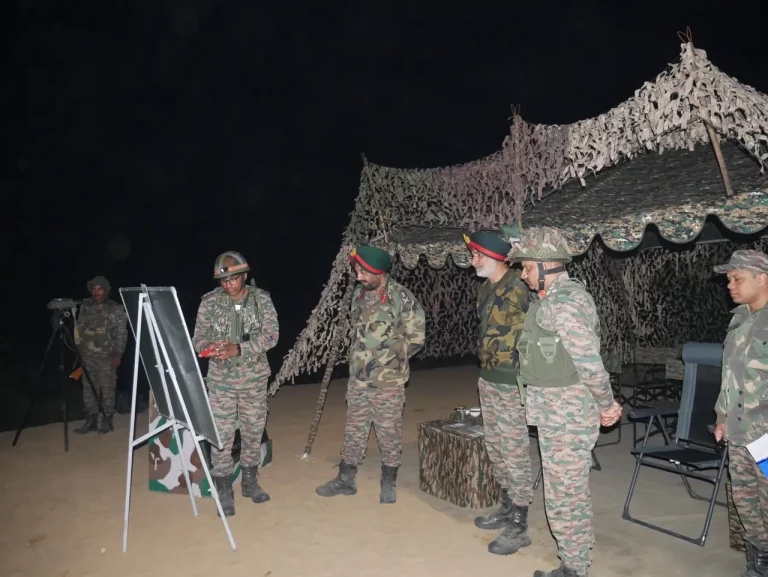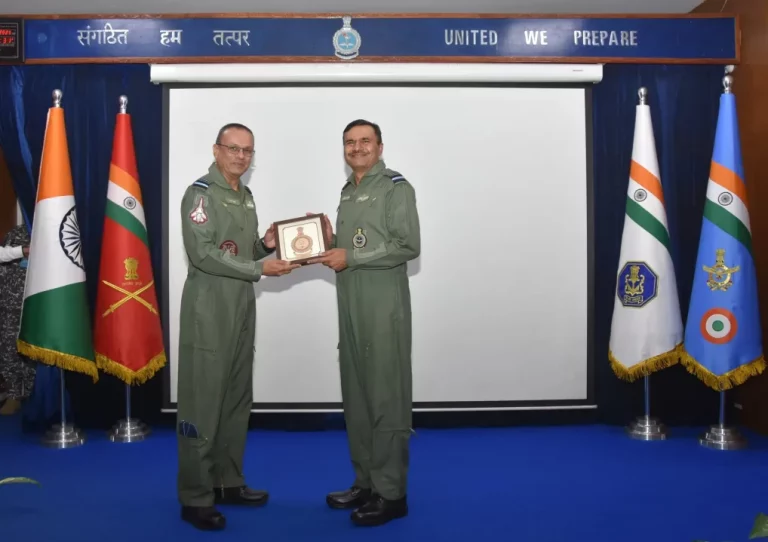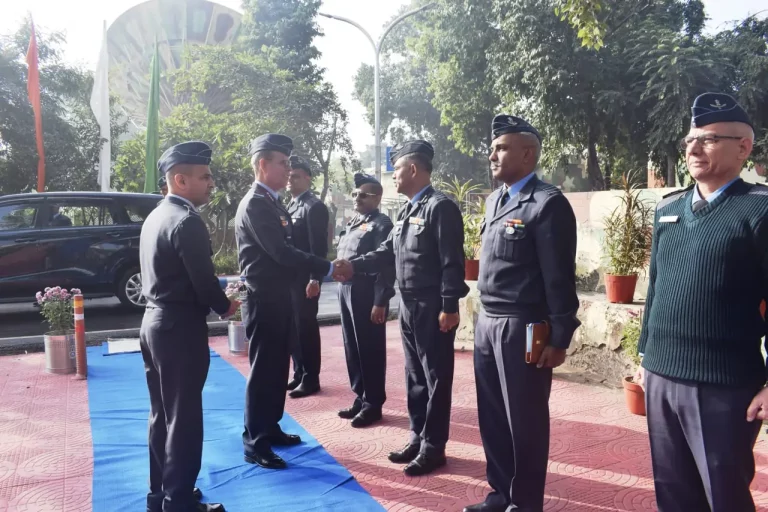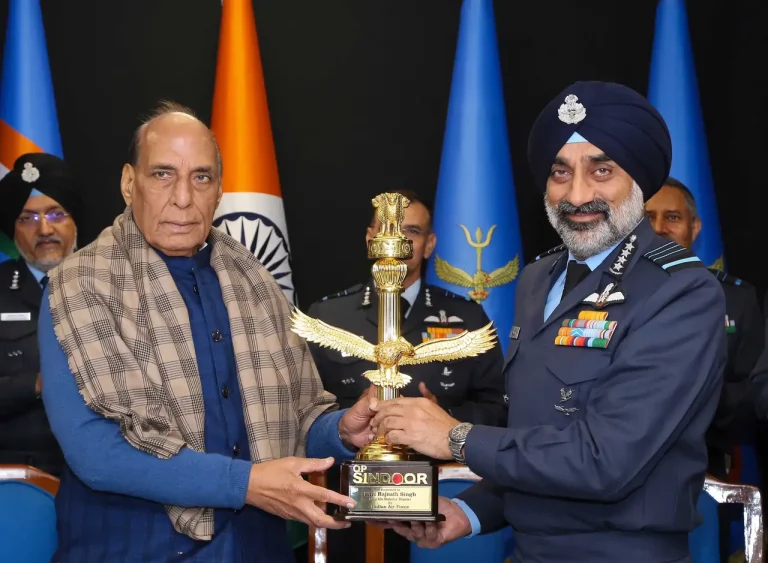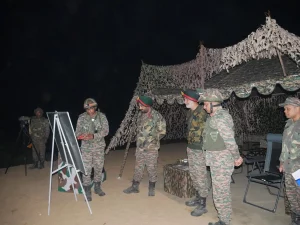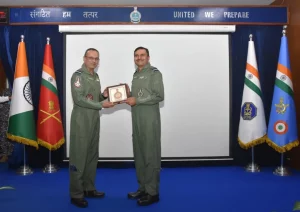India made a significant impact at the 17th Langkawi International Maritime and Aerospace Exhibition (LIMA 2025) with the inauguration of the India Pavilion by Raksha Rajya Mantri Shri Sanjay Seth. The exhibition, held from May 20 to 24 on the scenic Langkawi Island, symbolizes a pivotal moment in India’s journey to emerge as a formidable player in global defense, aligning with its Aatmanirbhar Bharat (self-reliant India) initiative.
The India Pavilion served as the highlight of LIMA 2025, showcasing the advancements within the Indian defense manufacturing sector. Key Defense Public Sector Undertakings (DPSUs) were on display, including Hindustan Aeronautics Limited (HAL), Bharat Electronics Limited (BEL), Bharat Dynamics Limited (BDL), Bharat Earth Movers Limited (BEML), and Mazagon Dock Shipbuilders Limited (MDL). Significant contributions also came from other public-sector enterprises such as Mishra Dhatu Nigam Limited (MIDHANI), India Optel Limited (IOL), and Gliders India Limited (GIL). Additionally, private Indian defense firms participated, underscoring the diversity and dynamism of India’s defense industry.
India’s involvement at this exhibition takes on added importance as LIMA has evolved into one of the Asia-Pacific region’s foremost defense showcases since its inception in 1991, attracting participation from over 20 nations. The India Pavilion’s prominent position among global defense leaders accentuates India’s ambition to solidify its role as a critical contributor to international arms and aerospace markets.
During the inauguration, Shri Sanjay Seth engaged with Malaysian Prime Minister YAB Dato’ Seri Anwar Bin Ibrahim and was scheduled for discussions with Malaysia’s Defence Minister Dato’ Seri Mohamed Khaled bin Nordin. These high-level meetings aimed to bolster strategic and defense relationships between India and Malaysia, focusing on potential collaboration in defense production and maritime security initiatives.
A core theme of India’s representation was indigenization. An example of this was HAL’s recent achievement in developing an indigenous Fuel Air Valve for Jaguar aircraft, marked as a significant stride towards reducing reliance on imports and enhancing cost-efficiency. Over recent years, India’s defense exports have surged, reaching $2.63 billion in FY 2023-24. The Draft Defence Production and Export Promotion Policy (DPEPP) 2020 sets ambitious goals, targeting defense exports worth ₹35,000 crore ($5 billion) by 2025, alongside a total manufacturing turnover of ₹1.75 lakh crore ($25 billion).
Attention was also drawn to India’s defense innovation ecosystem, especially through the iDEX (Innovations for Defence Excellence) program. Startups like Aeromobix Systems Pvt. Ltd. showcased their indigenous portable hydraulic metal cutter, designed for naval emergency operations, receiving commendations for their creativity and technical prowess.
Despite facing budgetary and structural obstacles—including a constrained ₹5.94 lakh crore defense budget and maintaining its status as the world’s largest arms importer, which accounted for 11% of global imports between 2018 and 2022 according to SIPRI—India is making strides towards becoming a notable global exporter. Currently holding just 0.2% of the global arms export market, initiatives such as the Positive Indigenisation Lists and streamlined export regulations aim to shift this narrative in India’s favor. Notable products like the BrahMos missile, already exported to the Philippines, further enhance India’s global defense footprint.
As LIMA 2025 progresses, India’s robust presence, led by Shri Sanjay Seth, underscores the nation’s evolving narrative in defense—centered on self-reliance, innovative solutions, and strong international partnerships. The India Pavilion not only showcases technological advancements but also solidifies India’s commitment to shaping the future landscape of global defense and aerospace.



